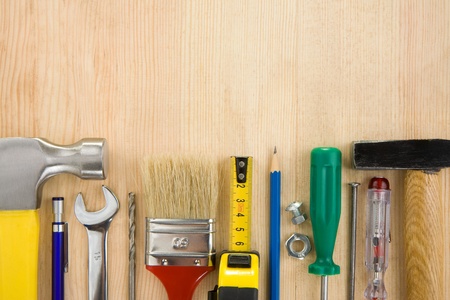1. Understanding the Historical Context
Before beginning any renovation project on a historic home, its crucial to understand its background. Preserving architectural integrity starts with learning about the homes original design, construction materials, and the era it was built in. This knowledge helps guide respectful updates that honor the homes history while meeting modern needs.
Why Historical Context Matters
Every historic home has a story. Whether its a Colonial Revival from the early 1900s or a Mid-Century Modern gem, each architectural style reflects a specific time period, cultural influence, and building technique. Knowing these details helps you avoid changes that could compromise the homes character.
Researching Your Historic Home
You don’t have to be an architect or historian to do meaningful research. Start by collecting basic information through public records, local historical societies, and even neighbors who may know more about the property’s past.
Key Areas to Research
| Focus Area | What to Look For |
|---|---|
| Architectural Style | Identify whether your home is Victorian, Craftsman, Federal, etc., and learn the hallmarks of that style. |
| Original Materials | Find out what materials were used (e.g., wood type, roofing tiles, window glass) so replacements can match as closely as possible. |
| Historic Significance | Determine if your home played a role in local history or was designed by a notable architect. |
Where to Find Reliable Information
Here are some sources that can help you gather accurate details:
- Local Historical Societies: Often have archives, photos, and expert guidance.
- City or County Records: Permit histories and old blueprints might be available.
- Libraries: Look for books and local history sections focused on architecture.
- The National Register of Historic Places: A searchable database of recognized historic properties across the U.S.
The Foundation for Respectful Renovation
Understanding your homes origins isn’t just about facts—it’s about respect. When you take the time to appreciate the craftsmanship and design choices made decades ago, you’re better equipped to make renovation decisions that maintain the homes soul while updating it for today’s lifestyle.
Tip:
If youre unsure about your findings, consider consulting a preservation specialist or architect familiar with historic homes. They can provide insights that save you from costly mistakes down the line.
2. Common Challenges in Historic Home Renovation
Renovating a historic home can be incredibly rewarding, but it also comes with unique challenges. Balancing modern functionality with the preservation of original character takes careful planning and thoughtful execution. Below are some common issues homeowners face when renovating historic properties, along with strategies to overcome them while maintaining architectural integrity.
Outdated Systems
Many historic homes still rely on outdated electrical, plumbing, and HVAC systems that no longer meet modern safety or efficiency standards. Upgrading these systems is essential, but it must be done in a way that doesnt compromise the homes historic features.
Strategies:
- Electrical: Use existing chases or baseboards to run new wiring without damaging original plaster walls.
- Plumbing: Replace old galvanized pipes with modern materials like PEX, which are flexible and easier to install within tight spaces.
- HVAC: Consider mini-split systems or high-velocity HVAC systems that require minimal ductwork.
Structural Concerns
Time can take a toll on any structure. Historic homes may have foundation issues, rotting wood, or sagging floors due to age and settling.
Common Structural Issues and Fixes:
| Issue | Description | Preservation-Friendly Solution |
|---|---|---|
| Foundation Cracks | Caused by settling or water damage | Use epoxy injections for minor cracks; consult a structural engineer for major repairs |
| Sagging Floors | Often due to weakened joists or subflooring | Reinforce from below without replacing visible flooring whenever possible |
| Rotting Wood Beams | Common in basements and attics | Treat with wood hardeners or replace only the damaged portion to retain as much original material as possible |
Building Code Compliance
Historic homes often fall short of current building codes, especially in areas like stair width, ceiling height, and egress windows. Bringing the home up to code while preserving its historic charm requires creative solutions.
Tips for Staying Compliant Without Compromising Character:
- Work with local preservation offices: They can offer exemptions or alternative compliance paths for historic properties.
- Select period-appropriate materials: When updating elements like handrails or windows, use materials and styles that mimic the original design.
- Add discreet safety features: Install smoke detectors or fire sprinklers in less visible areas to preserve aesthetics while meeting safety codes.
Tackling these challenges head-on with thoughtful planning can help ensure your renovation enhances both the livability and historical value of your home.

3. Sourcing Authentic Materials and Features
When renovating a historic home, one of the most important steps in preserving its architectural integrity is using materials and features that reflect the time period in which it was built. This not only helps maintain the homes historical value but also ensures that updates blend seamlessly with the original design.
Understand Your Home’s Era
Before you start sourcing materials, it’s essential to research your home’s construction date and architectural style. Whether its a Victorian, Craftsman, Colonial Revival, or Mid-Century Modern home, each era has distinct characteristics. Understanding these will guide your choices for appropriate materials and fixtures.
Where to Find Period-Appropriate Materials
You don’t always need brand-new products to match your home’s original style. In fact, salvaged and reclaimed items often offer the best match for authenticity. Here are some common sources:
| Source | Description |
|---|---|
| Architectural Salvage Yards | Great places to find original doors, windows, moldings, and hardware. |
| Online Marketplaces (eBay, Etsy) | Search for vintage light fixtures, knobs, and decorative elements. |
| Specialty Reproduction Retailers | Offer new products made to replicate historic designs. |
| Local Antique Shops | Often carry unique period items like stained glass or fireplace mantels. |
| Estate Sales & Auctions | Can provide access to authentic items from homes of similar age and style. |
Matching Architectural Details
Pay close attention to wood trim profiles, window styles, flooring materials, and ceiling treatments. Even small details like baseboards or crown molding can greatly affect how authentic a space feels. If originals are damaged or missing, consider custom millwork based on samples or old photos.
Tips for Getting It Right:
- Photograph existing details: Use them as a reference when shopping or ordering replacements.
- Consult preservation specialists: They can help identify accurate styles and finishes.
- Avoid modern shortcuts: Some newer materials may be easier to install but won’t look right in a historic setting.
Selecting Period Fixtures
Lighting, plumbing fixtures, and hardware should match the homes era whenever possible. For example, exposed bulb sconces are great for early 20th-century homes, while brass or porcelain knobs fit well with Victorian styles. Many manufacturers now offer historically inspired lines that meet modern codes without sacrificing looks.
Examples of Fixture Styles by Era:
| Era | Common Fixture Styles |
|---|---|
| Victorian (1837–1901) | Candle-style chandeliers, ornate door knobs, clawfoot tubs |
| Craftsman (1905–1930) | Mica lighting shades, hammered metal hardware, pedestal sinks |
| Mid-Century Modern (1945–1969) | Sleek chrome finishes, globe lights, minimalist cabinet pulls |
Sourcing authentic materials takes time and effort but makes a huge difference in keeping a historic home true to its roots. By being thoughtful about where you get your supplies and how you match details, youll create a renovation that honors both history and craftsmanship.
4. Balancing Modern Conveniences with Classic Design
Renovating a historic home often means striking the right balance between preserving its original charm and updating it for modern living. Homeowners want features like central air, smart lighting, and high-speed internet—but how can you add these without altering the character of the home? Here are some effective ways to blend modern amenities into your historic property while maintaining its architectural integrity.
Smart HVAC Integration
Installing a modern HVAC system is one of the most common upgrades in older homes. Traditional ductwork can damage ornate ceilings or trim work, so consider these alternatives:
| Modern HVAC Solution | Description | Why It Works for Historic Homes |
|---|---|---|
| Ductless Mini-Split Systems | Uses wall-mounted units connected to an outdoor compressor. | No need for extensive ductwork; preserves walls and ceilings. |
| High-Velocity HVAC Systems | Small, flexible ducts fit through existing wall cavities. | Minimally invasive and ideal for retrofitting older structures. |
| Radiant Floor Heating | Tubes under flooring provide consistent heat. | Keeps radiators out of sight and preserves interior aesthetics. |
Lighting That Fits the Era
You can brighten up your home without compromising its historic charm. Use recessed lighting sparingly and opt for vintage-style fixtures that match the time period of your home. You can also retrofit antique chandeliers or sconces with LED bulbs to improve energy efficiency while keeping the look authentic.
Tips for Lighting Integration:
- Select fixtures that replicate historical designs but meet current electrical standards.
- Add dimmer switches to create ambiance without altering the fixture itself.
- If installing new wiring, fish cables through attic or basement spaces to avoid damaging plaster walls.
Tech Upgrades Without the Eyesore
You don’t have to sacrifice style for smart home convenience. Hide tech components behind cabinetry or within custom woodwork. Here are some ways to integrate modern technology discreetly:
| Amenity | Sneaky Integration Idea |
|---|---|
| Smart Thermostats | Select models with minimalistic designs and neutral colors; install in less prominent areas. |
| Cable & Wi-Fi Wiring | Run wiring through baseboards or use wireless mesh systems to avoid drilling into original walls. |
| Builtin Speakers | Install flush-mount ceiling speakers and paint them to match surrounding finishes. |
Avoid Common Mistakes:
- Avoid cutting into original moldings or structural elements—always explore non-invasive installation options first.
- If youre unsure about compatibility, consult a contractor experienced in working with historic homes.
The key is to respect the homes original craftsmanship while making it livable by today’s standards. With thoughtful planning and the right approach, you can enjoy all the comforts of modern life without losing what makes your historic house special.
5. Working with Preservation Guidelines and Experts
When renovating a historic home, its essential to understand and follow local preservation guidelines. These rules are designed to protect the architectural integrity of homes that have cultural or historical value. Navigating these requirements may seem overwhelming at first, but by working with the right professionals and organizations, you can ensure your project stays compliant while honoring the homes original character.
Understanding Local Preservation Ordinances
Most cities or counties in the U.S. have specific ordinances for historic properties. These regulations can dictate what materials can be used, how structures can be modified, and even what colors are acceptable for exterior paint.
Common Historic Preservation Requirements
| Requirement | Description |
|---|---|
| Material Restrictions | Only certain historically accurate materials can be used on exteriors. |
| Design Review | Proposed renovations must go through a review board before approval. |
| Permit Requirements | Special permits may be needed beyond standard construction permits. |
Collaborating with Historical Societies
Your local historical society is an invaluable resource when it comes to understanding your homes history and what restoration techniques are appropriate. They often have archives, photographs, and documentation that can help guide your design choices.
How Historical Societies Can Help
- Provide access to historical records about your property
- Offer recommendations for period-appropriate materials and styles
- Help connect you with skilled preservation professionals
- Advocate on your behalf during permit applications or reviews
Hiring Professionals Specializing in Historic Restorations
Renovating a historic home isn’t like a typical remodeling job—it requires specialized knowledge. Look for architects, contractors, and craftsmen who have experience with historic properties. These experts understand how to blend modern needs with traditional aesthetics without compromising the structure’s authenticity.
Tips for Choosing the Right Expert
- Check Credentials: Make sure they have experience with similar projects and understand local codes.
- Ask for References: Talk to past clients about their experience working with the professional.
- Review Portfolios: Look at before-and-after photos of previous historic renovations.
- Involve Them Early: Bring them into the planning phase so they can help navigate compliance from the start.
Navigating Compliance Smoothly
The key to successfully preserving a historic home lies in preparation and collaboration. Start by researching your local ordinances, then connect with your historical society, and finally build a team of experienced professionals. With these steps, youll be well on your way to a renovation that respects the past while creating a beautiful future for your home.


